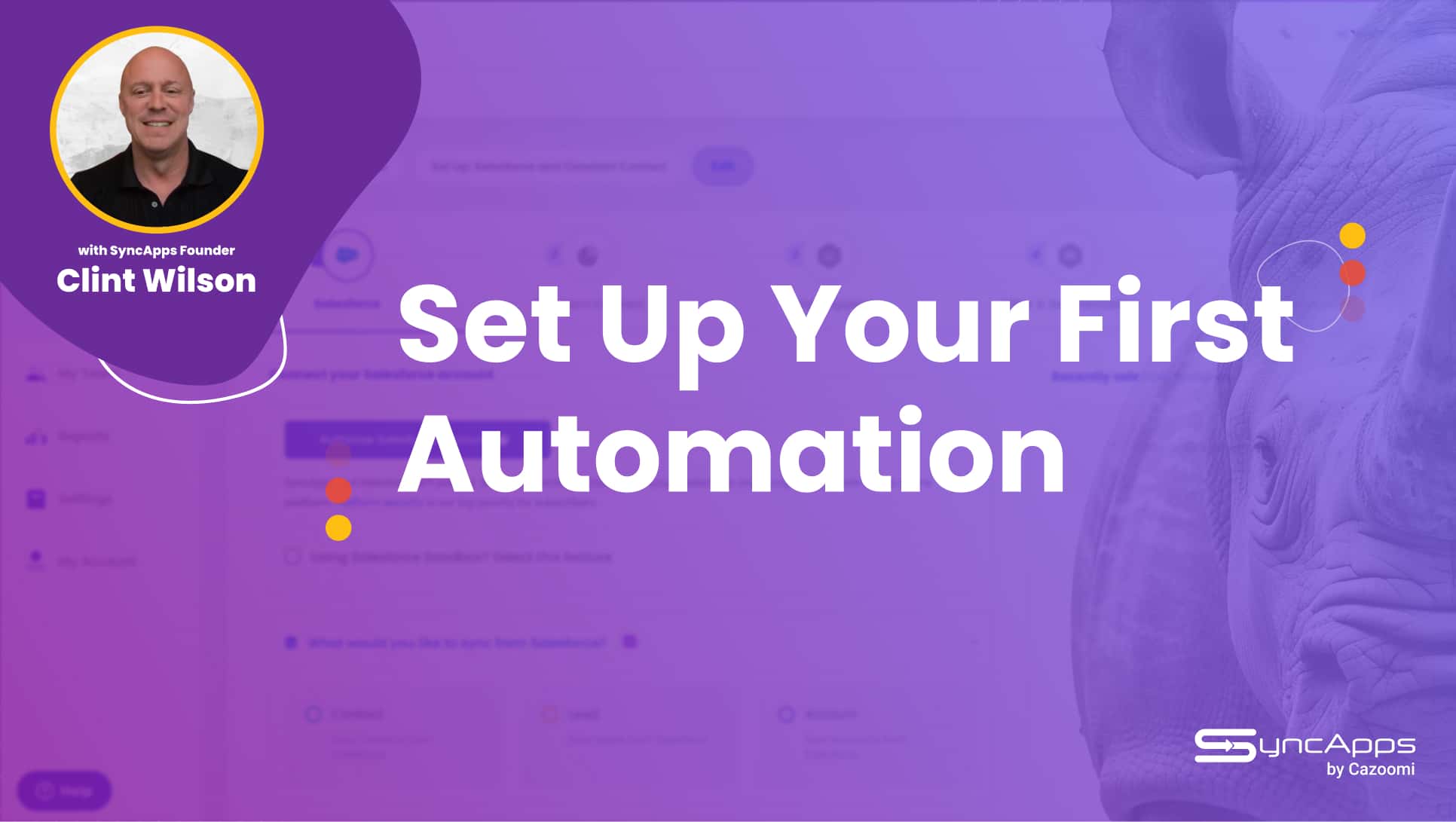Small Business? Here’s Why the Integration Industry Thinks You’re Irrelevant

Did you notice how politicians talk about small businesses being the lifeblood of the economy?
No, not the “big, evil corporations”, the small, loveable businesses are what they won’t shut up about.
This happens in most countries around the world. And you know what? Politicians aren’t the only hypocrites.
The tech world (especially SaaS and iPaaS) has thousands of companies that promise they are a godsend for SMEs. That their services are specifically built for SMEs. That they understand SMEs.
Right.
Except everyone is, in fact, gunning for enterprise-level clients, the kind with deep pockets.
The Alluring Illusion of Affordability
At first glance, many integration platforms seem like a godsend. They dangle low monthly fees and enticing promises of seamless data synchronization like a carrot on a stick, coaxing you to take the plunge.
“Look at us! We’re the affordable choice!” they say, with the sort of enthusiasm that would make a used car salesman proud.
But wait — before you sign on the dotted line, let’s take a closer look at what “affordable” really means in this context.
What these platforms conveniently neglect to mention is that their entry-level plans often come with more strings attached than a marionette in a puppet show. Sure, you might be thrilled to snag that $29.99 monthly plan, but hold on to your wallet because once you hit the arbitrary limits — say, a couple thousand records or a handful of syncs — you’ll be subjected to a hefty price hike.
You could find yourself forking over thousands of dollars a month to maintain the very functionalities you thought were included in your plan. Congratulations, you’ve just experienced the classic bait-and-switch!
Let’s say you’re a small business looking to grow. You initially opt for that budget-friendly plan, but before you know it, you’re staring down a multi-tier pricing model that makes your head spin.
As you start to gain traction, the costs begin to climb, leaving you wondering if you’ve inadvertently signed a deal with the devil — or at least with the integration industry.
One of my biggest points of pride is that we built SyncApps differently.
With SyncApps, you won’t encounter those pesky hidden costs. While many platforms impose strict limits on records and syncs, SyncApps offers virtually unlimited records on almost all its plans — over a million on two of them and 10,000 on the first plan, to be precise.
No more scrambling to upgrade mid-month when you inevitably surpass that arbitrary threshold. You can focus on your business instead of worrying about inflated bills, which is, let’s face it, a breath of fresh air.
The Scalability Scam
Let’s tackle the big, shiny buzzword that integration platforms love to flaunt: scalability. If you’ve ever been enticed by promises of a solution that grows with you, only to be left feeling like you’re still using dial-up in a fiber-optic world, you’re not alone.
The reality is that scalability often turns out to be little more than an illusion, especially for small businesses.
In the early days of your business, when everything feels manageable, and the stakes seem low, those promises of scalability sound great. You’re syncing a few hundred records, everything’s running smoothly, and you think, “Wow, this is easy!”
But just wait until you start to expand — maybe you launch a new product or venture into a new market. Suddenly, the “scalable” solution that was supposed to adapt to your growth feels more like a constricting belt than a flexible resource.
Many integration platforms are built for the big fish in the pond, leaving small businesses floundering. Once you start hitting those growth milestones, the restrictions of your “scalable” solution begin to rear their ugly heads.
You might discover that your plan has a hidden ceiling—say, only a few thousand records or a limited number of API calls. As you surpass those limits, the cost to maintain your integrations skyrockets, and the scalability you were promised turns into a trap that threatens to swallow your budget whole.
Let’s not forget that for small businesses, every penny counts. Spending on an integration platform shouldn’t feel like throwing money into a black hole.
The Small Business Blind Spot
As you look for the ideal integration platform, you might start to feel like the industry has a case of small business blindness. With a one-size-fits-all approach, many platforms develop solutions that prioritize the needs of larger corporations while ignoring the unique challenges faced by small enterprises.
What does this mean for you?
It means that you’re often left sifting through a myriad of features that don’t apply to your situation. Imagine trying to find a pair of shoes in a store that specializes in clown shoes — sure, they have plenty of options, but none of them fit.
The features you’re offered often feel more like a burden than a blessing, complicating processes that should be straightforward.
You might find yourself yearning for a simple interface, only to be met with a confusing labyrinth of dashboards and menus that look like they were designed for a space mission rather than everyday business operations.
And when you finally seek help, good luck.
You could be greeted by a chatbot that seems to have a PhD in technical jargon but no grasp of your actual concerns. You’re left hanging in the digital void, wondering why you thought this integration platform was a good idea in the first place.
This is why we worked very hard at simplifying SyncApps over the last few years. We ruthlessly nixed integrations and features because they did more harm than good.
These days, if we build a new feature, we do it because at least one of our clients expressly requests it. So we know for a fact that someone needs it — we don’t build just so we can charge more for a bloated solution.
Don’t take my word for it; try it for yourself and find out why we are the preferred integration platform for SMEs.
The Support (or Lack Thereof) Factor
Now, let’s not ignore the support factor. As a small business owner, you’re already juggling a million responsibilities.
When you run into issues with your integration solution, you need responsive, helpful support. Unfortunately, many platforms seem to think that “support” means a long wait time followed by an FAQ page that leaves you more confused than before.
When you finally reach out for help, you might find yourself navigating a maze of automated responses, struggling to connect with a real person who can address your specific concerns. By the time you finally get the assistance you need, you could be left feeling more frustrated than when you started.
In an effort to cut down prices, most integration platforms did one of three things:
- Gave up customer support altogether. If you can’t figure it out through their Help articles, well, tough luck.
- They make you pay for support.
- Support is only available for the users on the highest (enterprise-level) plans.
My biggest surprise of the last few years came when we realized our best differentiating point is that we have 24/7 support with real humans, for all our plans. So we doubled down on it and, these days, we even offer free consulting calls to all our clients.
Beyond platform support, our clients use these calls for strategy and for finding solutions to maximize their ROI.
Speaking of ROI,
The ROI Dilemma
ROI is the name of the game. You don’t pay for integration just because all the cool kids do it. At least, I hope you’re not.
When you’re investing in an integration solution, you want to see results that justify your expenses. Unfortunately, many integration platforms are quick to showcase their features, but they often fall short when it comes to delivering real value.
You could find yourself questioning whether the money you’re spending is worth the benefits you’re receiving.
Have you calculated the ROI of your integration subscription?
We’ve recently started talking to our clients about it and we see a 4-digit ROI on average. We’ll report back on it when we centralize all this data.
The Path Ahead: Choosing the Right Integration Solution
When you choose your integration solution, remember that you don’t have to settle for the status quo. The integration industry may think small businesses are irrelevant, but that’s simply not the case.
With the right tools at your disposal, you can elevate your operations and carve out your place in the market.
When evaluating your options, ask yourself what you truly need from an integration solution.
- Is it a platform that understands your unique challenges?
- Is it a pricing model that won’t leave you broke as you scale?
- Is it responsive support that actually helps you when you hit a snag?
Go beyond marketing claims and website copy. Look at what real users are saying about the platforms on your shortlist, ideally on third-party websites.
We like to link to our G2 profile as often as possible because we want you to make an informed decision. Here it is again — check out everything about SyncApps, the good, the bad, and the in-between.
The Future of iPaaS for Small Businesses
You’d be excused if you thought of me as a Negative Nelly after reading this article. So let me fix that perception by saying it’s not all doom and gloom for SMEs looking for integration solutions.
We’ve been in this business since 2009 and the industry has changed a lot since then — mostly for the better. As we’ve been touting the democratization of data and championing affordable integration that’s not crappy, the industry listened.
So now, you have some good options out there. Are they perfect? Nope, none of them. No, not even SyncApps.
But, as competition grew, iPaaS solutions realized there were only so many enterprises they could target. So they had to properly cater to small businesses too.
While there’s still a lot of work to be done in this space, the landscape is looking much better than it did back in the 2010s. You have options — a couple of them quite solid.
Curious if SyncApps is a good option for you? We promise to tell you if we think you’d be better off on another integration platform — we know we’re not for everyone and we’re not trying to be.
Start your free trial and, from your dashboard, book a free call with our consultants. What have you got to lose?




